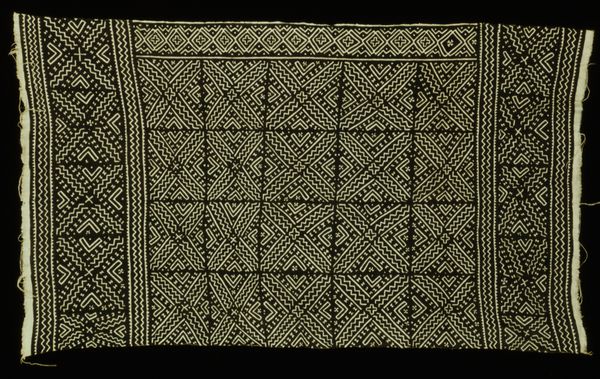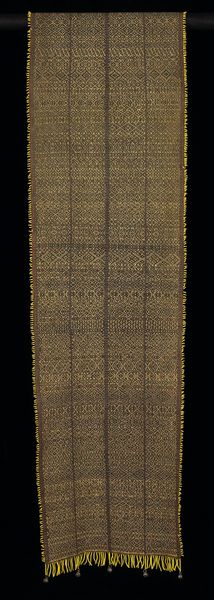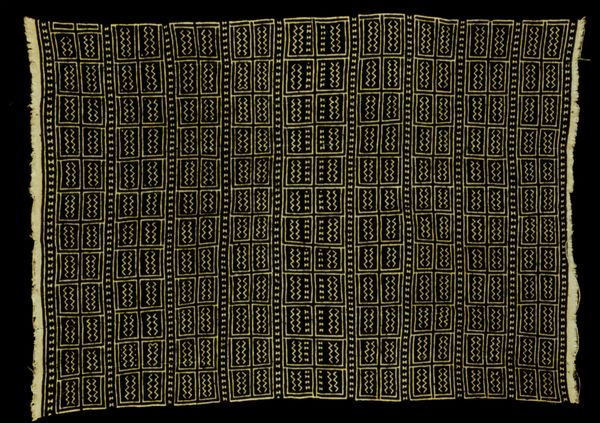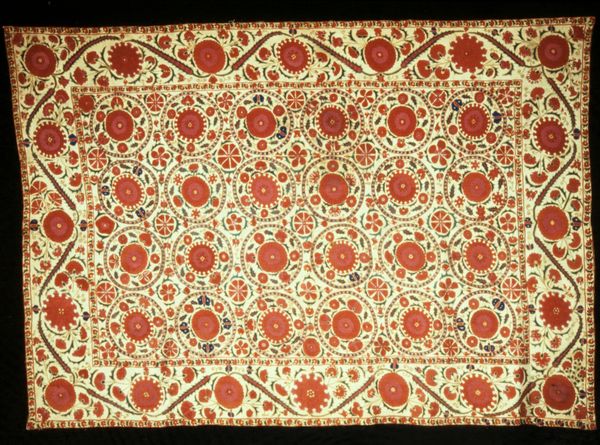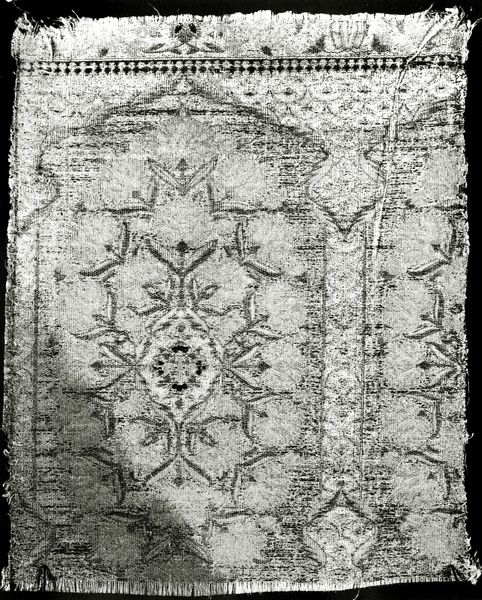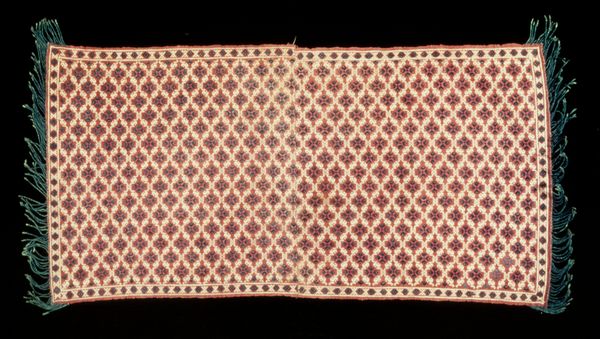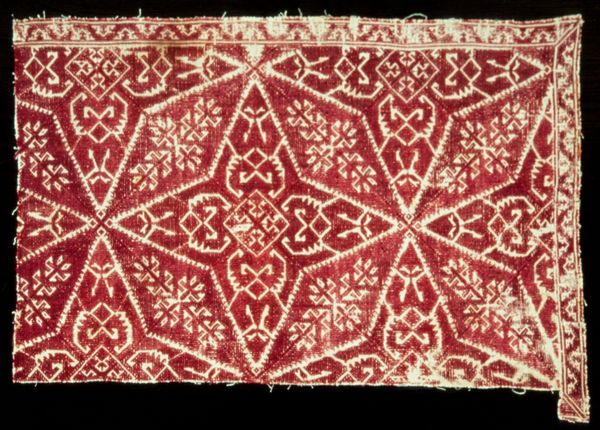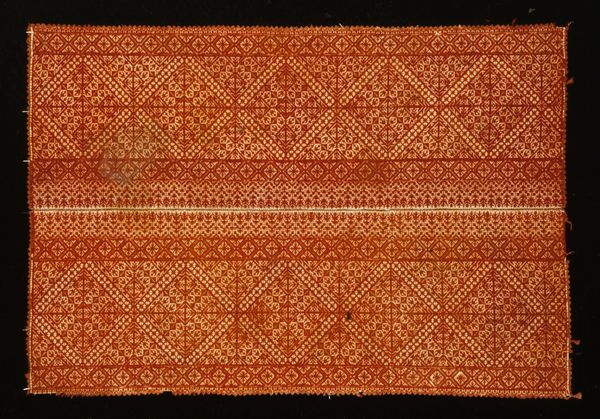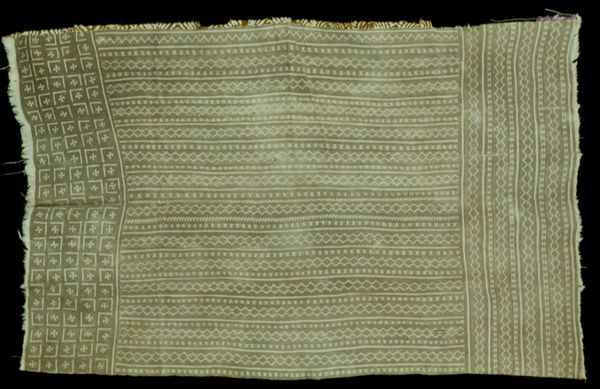
textile, cotton
#
african-art
#
natural stone pattern
#
man-made pattern
#
textile
#
geometric pattern
#
carved into stone
#
repetitive shape and pattern
#
geometric
#
repetition of pattern
#
intricate pattern
#
pattern repetition
#
cotton
#
layered pattern
#
repetitive pattern
Dimensions: 43 1/2 x 52 1/2 in. (110.5 x 133.4 cm)
Copyright: Public Domain
Editor: This is a Mud Cloth, likely created in the 1980s, and made of cotton. Looking at the geometric patterns, it almost feels like a coded message. What do you see in this piece? Curator: For me, the Mud Cloth immediately speaks of a deep cultural memory. Think about it: the dyed cotton, the intricate, almost rhythmic geometric designs. They aren't merely decorative. They’re loaded with symbolic meaning, passed down through generations. Editor: So each shape or pattern tells a story? Curator: Potentially. Each motif could represent elements of the natural world, historical events, social status, or even spiritual beliefs. Imagine the artist, carefully applying the mud dye, embedding these layers of meaning into the fabric. How does that thought sit with you? Editor: It makes me think of other forms of storytelling, like Indigenous sand paintings, where the process itself is a sacred act. Is it the same here? Curator: Indeed. It’s about more than just creating an object. It is visual language with layers of intention. These cloths weren’t simply garments; they were statements, communicating identity and heritage. Editor: So, by studying the symbols, we can unlock insights into the Bamana culture itself? Curator: Exactly. This Mud Cloth becomes a window into understanding their worldview, their values, and their place in the world. Editor: Wow, I'll never look at textiles the same way again! Curator: Nor will I, because it reminds us to appreciate material objects beyond surface aesthetics, valuing them instead as vessels that convey meaning across time and space.
Comments
No comments
Be the first to comment and join the conversation on the ultimate creative platform.
